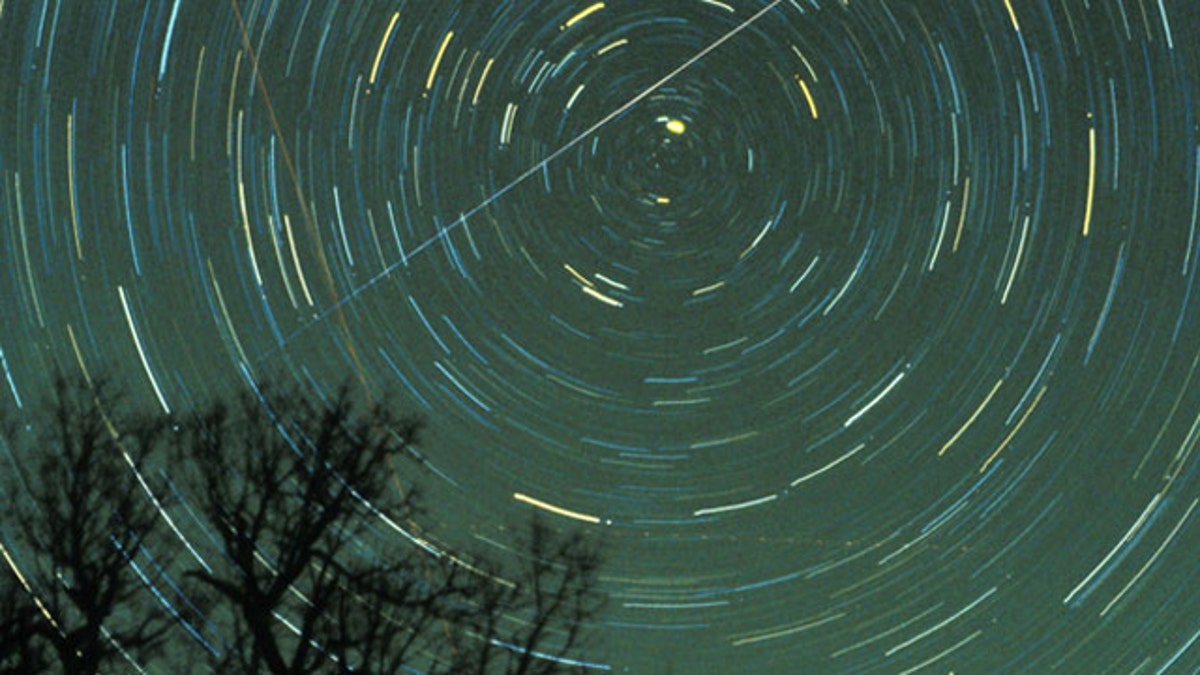
A Geminid meteor streaks across the sky. (Jimmy Westlake / NASA)
The Earth will pass through the cast-off remnants of an ancient comet Friday, and the resulting meteor shower will be lackluster at best, experts say. Yet the event sets the stage for a truly remarkable shooting star display in 2011.
The source of this annual October meteor display, called the Draconid meteor shower, is dust and debris leftover from Comet Giacobini-Zinner.
The Draconid meteor shower has a reputation for disappointing skywatchers with lackluster displays, unlike the spectacular sky shows that sometimes accompany the annual Perseid meteor shower in August and the Leonid shower in November. [Best Leonid Meteor Shower Photos]
This year, according to skwatching experts, will be no different. But by all accounts, 2011 will be a year to remember for the Draconids.
"This year, forecasters expect Earth to narrowly miss several of the debris streams, resulting in no appreciable display for 2010," reported Spaceweather.com, a website dedicated to monitoring space weather and sky events. "Next year, however, could be different. On Oct. 8, 2011, Earth will have a near head-on collision with a tendril of dust, setting off a strong outburst of as many as 750 meteors per hour."
In fact, the 2011 Draconid meteor shower is expected to be so astounding that NASA has already begun preparing for the risk to satellites orbiting Earth such as the International Space Station or Hubble Space Telescope.
"We're already working with NASA programs to deal with spacecraft risk," said William Cooke, a scientist with the Meteoroid Environment Office at NASA's Marshall Space Flight Center in Huntsville, Ala., during an interview with SPACE.com in June. "I imagine when the word gets out there will be a Draconid outburst, I'll get the usual calls from Comsat companies as well as government space programs."
In addition to the chance of dings, there is the possibility of electrostatic discharges associated with the collision between a meteoroid and a satellite, Cooke said. Such discharges can account for a significant fraction of spacecraft anomalies during meteor showers, he added.
While this year's Draconid meteor shower will likely be a bust, the 2011 Draconids should be a sight to behold, forecasters said.
The best vantage points will be Europe, Africa and the Middle East, Spaceweather.com reported.
The 2011 Draconids could possibly be the most powerful meteor shower since the dazzling Leonids display 10 years ago, the website added.
* Images - The Best of Leonid Meteor Shower
* Perseid Meteor Shower Lives Up to Its Promise
* NASA Prepares for Potentially Damaging 2011 Meteor Shower
Copyright © 2010 Space.com. All Rights Reserved. This material may not be published, broadcast, rewritten or redistributed.
FoxNews.com's SciTech section is on Twitter! Follow us @fxnscitech.
